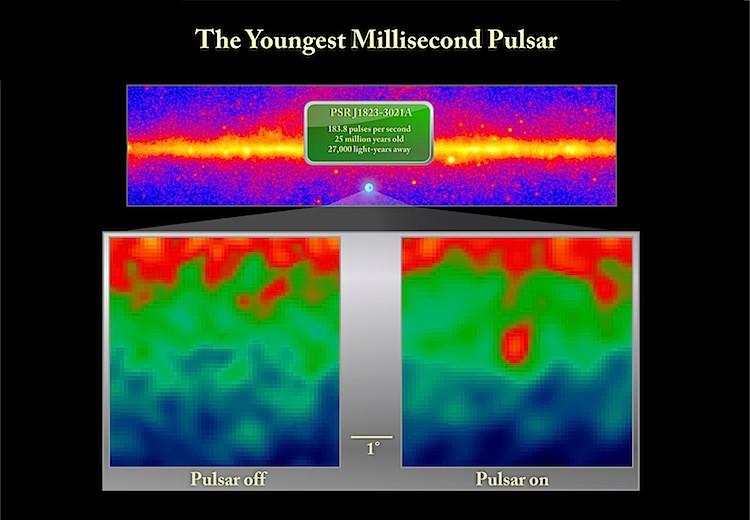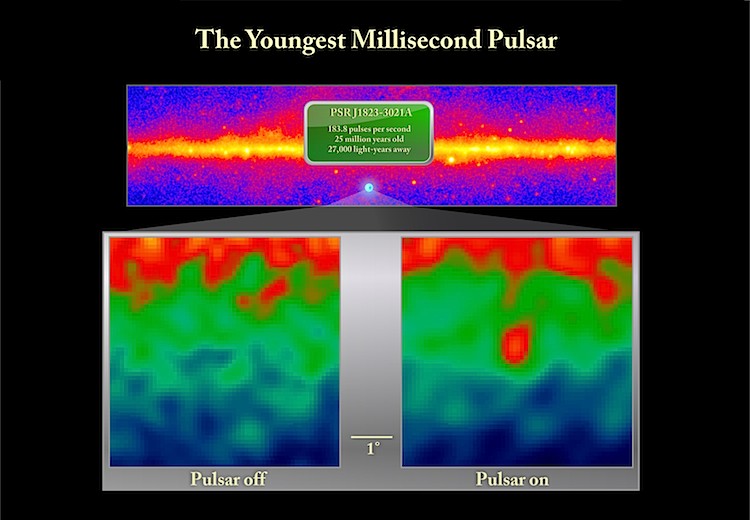Brightest, Youngest Millisecond Pulsar Discovered
The brightest ever pulsar has been found inside a globular cluster of galaxies, comprising thousands or perhaps millions of stars held together by mutual gravity, orbiting our own Milky Way galaxy.
|Updated:






